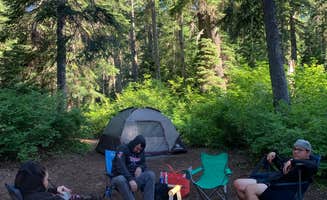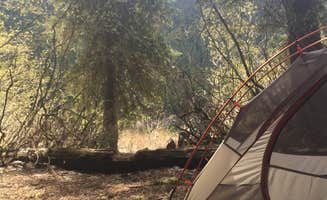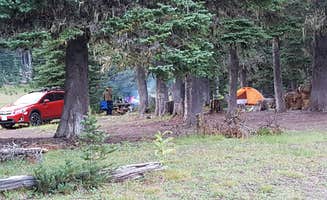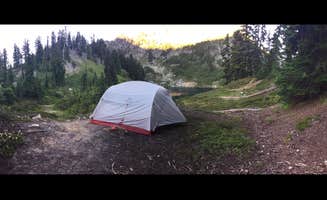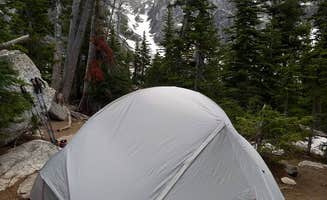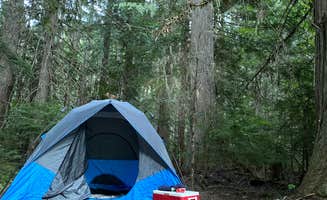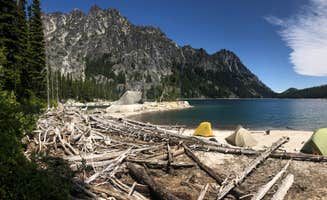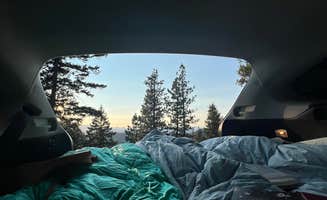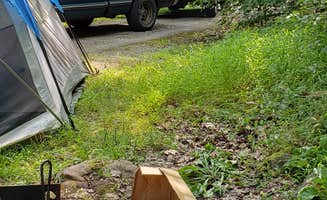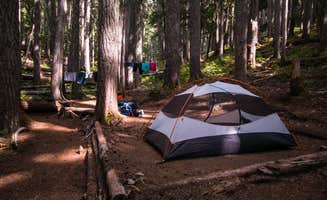Dispersed tent camping dominates the landscape surrounding Easton, Washington, with elevations ranging from 2,200 to 4,800 feet throughout the Okanogan-Wenatchee National Forest. Summer daytime temperatures typically reach 75-85°F but drop significantly at night, often falling to 40-50°F even in July and August. Most camping areas require Northwest Forest Passes for parking, available at ranger stations or online for $5 daily or $30 annually.
What to do
Fishing opportunities: Cooper Lake at Owhi Campground offers excellent rainbow trout fishing with no motorized boats permitted. "Fishing is excellent. Road has some pot holes, but otherwise easy for small vehicles," notes one camper at Owhi Campground.
River floating: The Cle Elum River near Salmon la Sac Road Dispersed Camping provides a popular floating route during summer months. "You can float the river down to Cle Elum lake. Once the weather warms up the river lowers and slows down," explains a regular visitor.
Alpine hiking: Multiple trail networks extend from camping areas, with options ranging from easy lakeside walks to challenging summit climbs. A camper at Colchuck Lake advises: "I would suggest 6 to 8 hours to hike in, sight see around the lake and hike out. Moderate to heavy traffic. Get to the parking lot early or no parking."
What campers like
River proximity: Many dispersed sites offer immediate water access, which campers consistently rate highly. At White River Dispersed Camping, a visitor shared: "We found a spot tucked super far in that had a small private beach. It was farther from the road so you couldn't see or hear anything."
Wilderness solitude: Despite growing popularity, numerous secluded camping options remain available for those willing to venture farther from main roads. "Lots of dispersed camping opportunities leading up to the Rachel Lake Trailhead and the Box Canyon Creek Site on NF-4930. Also many spots on the NF-118 spur," reports a camper at Kachess Lake Logging Road Campsites.
Mountain views: Several camping areas feature direct sightlines to Alpine Lakes Wilderness peaks. "We canoed on the lake and saw a few Elk bugling. Really amazing views," notes a visitor to Owhi Campground.
What you should know
Road conditions: Access roads to many dispersed sites require higher-clearance vehicles. At White River Dispersed Camping, a reviewer cautions: "4x4/high clearance vehicles recommended - saw some subarus trying to navigate into a cleared area and it was pretty scrape-y."
Site availability patterns: Weekends fill quickly at all camping areas from June through September, often by Thursday afternoon. "We arrived on a Thursday early afternoon and there were only 4 sites left of the 22 available first-come-first-served sites," reports one camper at Owhi Campground.
Wildlife considerations: Food storage containers are essential as bears frequent the area. At Thorp Lake, a camper notes: "This lake is a fairly easy hike in from the end of Forest Service Road 4312... The campground is on the other side where Thorp Creek dumps into the lake. Look for fire rings and bring your trowel as there's no outhouse that I could see."
Tips for camping with families
Swimming spots: Several areas offer child-friendly water access with gentle entry points. At Salmon la Sac Road Dispersed Camping, one reviewer mentions: "Lots of area for kids to create their little pools to swim in. Outhouses are sparse so bring tp. Very peaceful."
Short hike options: For families with younger children, numerous day hikes under 2 miles provide wilderness experiences without extensive trekking. "There are trails to explore but we didn't get a chance to try them," notes a camper at Cold Creek Campground.
Site selection: Arrive mid-week when possible to secure prime family-friendly locations. "We arrived mid afternoon on a Friday and there were plenty of options to pick from but it did fill up by around 9pm," advises a visitor to White River Dispersed Camping.
Tips from RVers
Size limitations: Most dispersed areas accommodate smaller RVs (under 25 feet) but present challenges for larger vehicles. At Kachess Lake Logging Road Campsites, an RV camper observed: "There are only one or two sites on this logging road that are available for RVs our size (ours is a Class A 35') about a mile up the compacted gravel road from the lake."
Power considerations: No hookups exist at any tent camping areas near Easton, requiring complete self-sufficiency. "No water. No electricity," confirms the same RVer at Kachess Lake.
Turnaround options: Forest roads often lack suitable turning areas for larger vehicles. "There is camping on the other side of the lake only excess by boat... There are horse camps at the end of the fire road with a cul-de-sac to turn around and head back out," notes a visitor to Owhi Campground.


